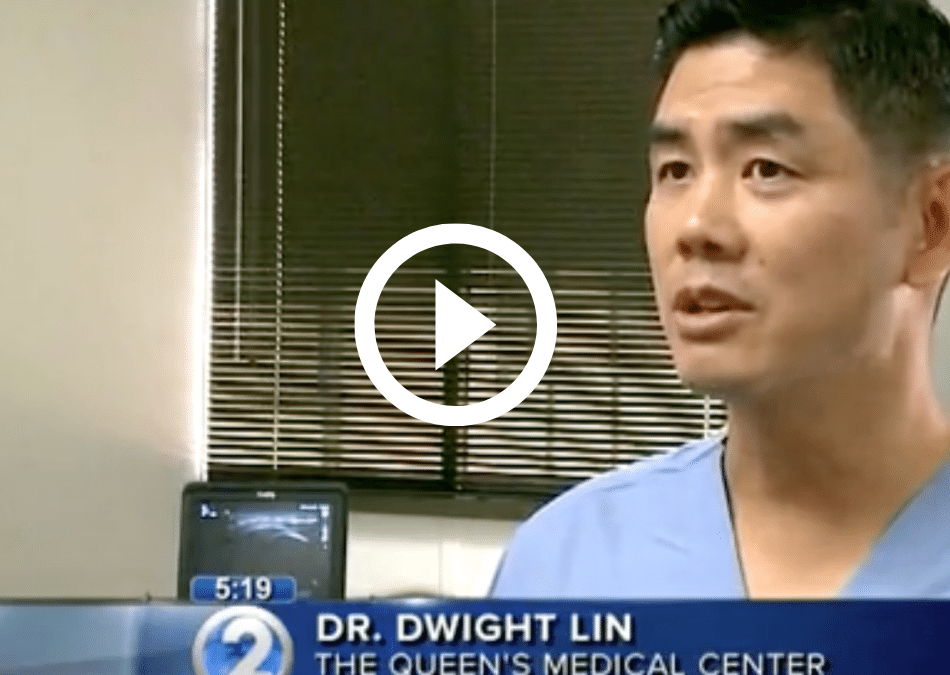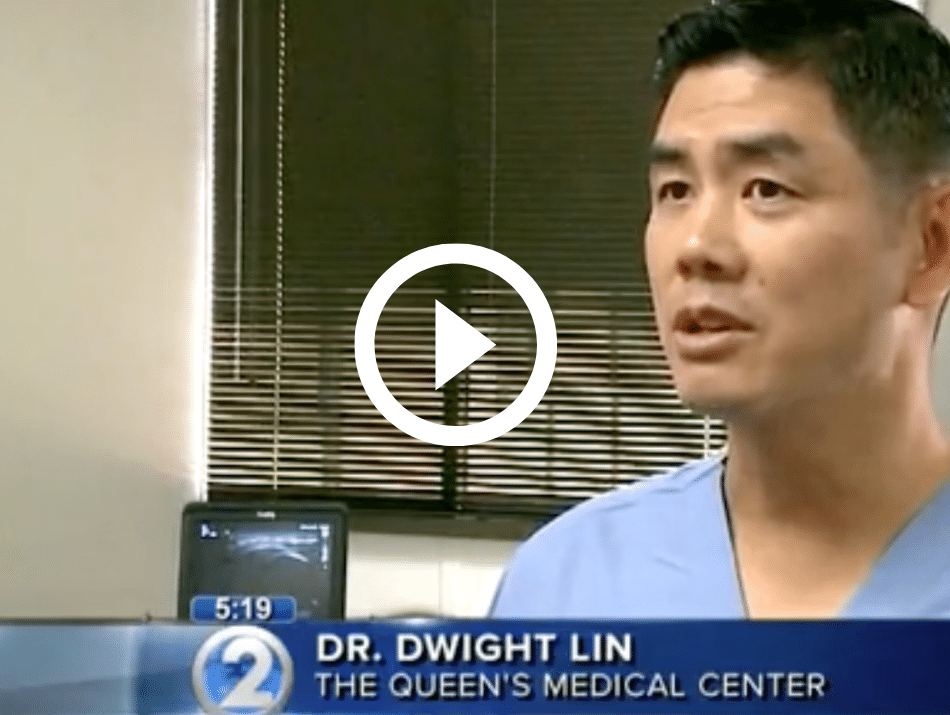KHON 2 News featured Dr. Dwight Lin to share the benefits and drawbacks of PRP therapy. In this interview he is joined by a patient of his, Sharon Smith, to explain how he helped her with chronic shoulder pain through PRP therapy.
“The problem is when you put cortisone in, you’re not only shutting down the swelling, but you’re also turning off a lot of those good molecules, those good things that are going on to get the healing process going,” said Dr. Dwight Lin, Queen’s Medical Center. The procedure takes a couple of hours and is performed in a medical office. Your blood is made up of 93 percent red blood cells, six percent white blood cells, and one percent platelets and plasma. Platelets are best known for blood-clotting to stop bleeding, but they also serve a different purpose. Human platelets are a critical component in injury healing. Lin uses ultrasound technology to inject the patient’s platelets into or near the point of injury. “Allowing us a way to look into that shoulder without radiation, without an expensive MRI,” Lin explained. “In the office, we can see where the medications are being delivered. We can see the blood vessels to avoid.”
Click here to watch the full interview.


